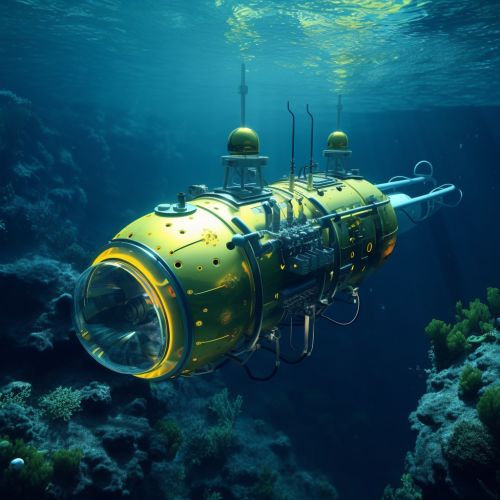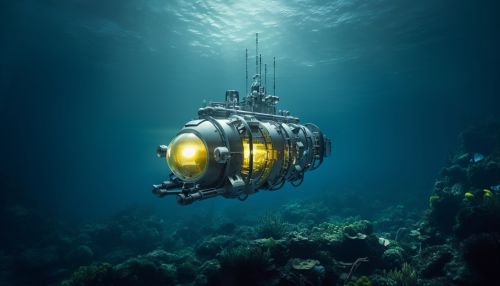Ocean storage
Introduction
Ocean storage refers to the process of storing carbon dioxide (CO2) in the deep ocean, a method proposed to mitigate the effects of climate change. The concept is based on the fact that the ocean is a natural sink for CO2, absorbing approximately a third of human-made emissions. The process aims to enhance this natural mechanism to reduce the concentration of CO2 in the atmosphere and thus limit global warming.
Principles of Ocean Storage
The ocean storage of CO2 involves capturing the gas at its source, typically power plants and industrial facilities, and transporting it to the ocean for storage. The captured CO2 is then injected into the deep ocean, typically at depths greater than 1000 meters, where it is expected to dissolve and be transported by ocean currents.


The solubility of CO2 in seawater increases with pressure, making the deep ocean an effective storage site. The high pressure and low temperature conditions at these depths lead to the formation of a CO2-rich phase, which is denser than seawater and tends to sink to the ocean floor. This process is known as CO2 sequestration.
Potential Storage Sites
The potential storage sites for ocean storage are determined by a number of factors, including depth, temperature, salinity, and ocean currents. The most suitable sites are typically located in the deep ocean basins, where the high pressure and low temperature conditions favor the dissolution and sequestration of CO2.
Environmental Impact
The environmental impact of ocean storage is a subject of ongoing research. The injection of CO2 into the ocean can lead to changes in the chemical composition of seawater, potentially affecting marine life. The long-term effects of these changes are not yet fully understood and are a key area of investigation in the field of marine biology.
Regulatory and Legal Aspects
The regulatory and legal aspects of ocean storage are complex and vary by jurisdiction. In general, the storage of CO2 in the ocean is subject to international law, including the United Nations Convention on the Law of the Sea (UNCLOS) and the London Convention on the Prevention of Marine Pollution.
Challenges and Future Prospects
While ocean storage offers a potential solution to the problem of CO2 emissions, it also presents a number of challenges. These include technical challenges related to the capture and transport of CO2, as well as environmental and regulatory challenges. Despite these challenges, research and development in the field of ocean storage continues, with the aim of improving the efficiency and reducing the environmental impact of the process.
